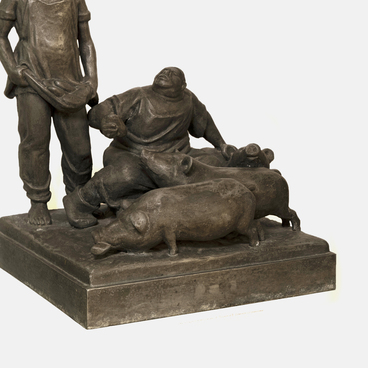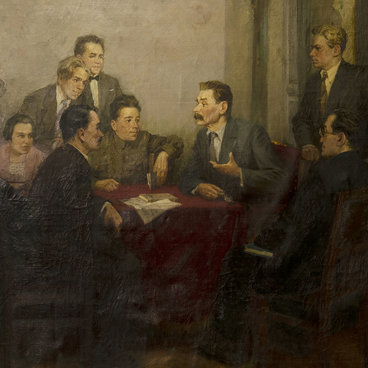The portrait depicts the young Alyosha Peshkov against the background of the Volga riverbank in Kazan. The future writer Maxim Gorky lived in Kazan from 1884 to 1888, having arrived there at the age of 16 from Nizhny Novgorod. Coming from a poor bourgeois family and brought up by his grandparents, the well-read young man was hoping to devote his life to science. Following the advice of an older friend from grammar school, Alyosha Peshkov intended to enter Kazan Imperial University. But he was not accepted.
When his dreams of becoming a student were shattered, Gorky found himself among thousands of unemployed people like himself and had to “take odd jobs”. He rented cheap rooms, worked as a lumper on Kazan docks, a gardener, a street sweeper, and a bakery assistant. Despite all the hardship of ungracious labor, Maxim Gorky still found a certain kind of romance about it to celebrate:Alexey Peshkov
The Volga also seduced me, and the rhythms of labor, a music that continues to this day to be a pleasant intoxicant to me. How clear in my memory stands the day when the epic poetry of labor first revealed itself to me.
This excerpt describes a day when a big barge carrying Persian goods ran aground near Kazan, and a gang of local stevedores took Alyosha to unload the cargo under the September evening sky.
The portrait of the young Alexey Peshkov is the embodiment of the main character of his novel“My Universities”. Peshkov’s passion for reading and writing provided him with an outlet to escape hardships of real life, gave him an opportunity to be carried away to the magical world of fiction and helped him to see bright colors in the places where a realist would only see a hopeless ocean of gray.
The portrait has a soft, delicate color palette. The young man’s peaceful state is emphasized by the landscape that perfectly conveys the charm of a summer day. The painter managed to use a great variety of soft transitions of hues within a single color. The painting was created by Viktor Kronidovich Fyodorov, a member of the Artists’ Union of the USSR, an Honored Art Worker and People’s Artist of the Tatar Republic. Viktor Fyodorov’s portrait of the young Gorky was commissioned for the museum’s updated exhibition in 1988.


